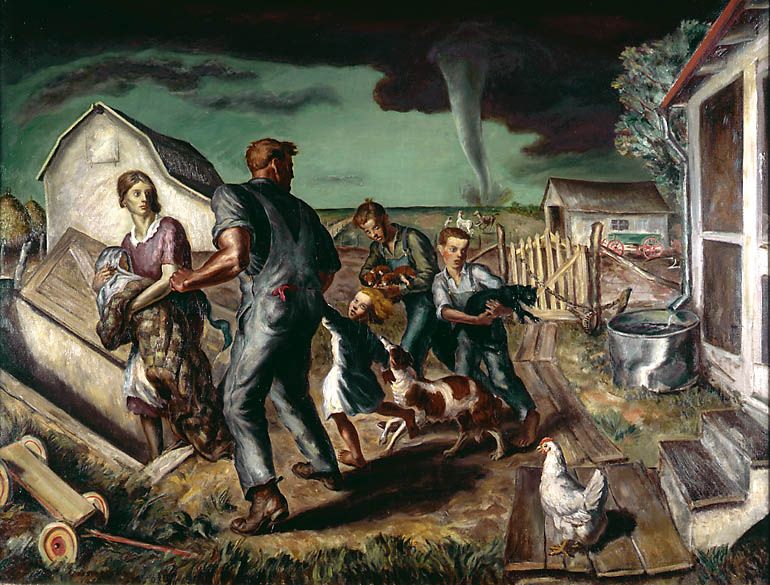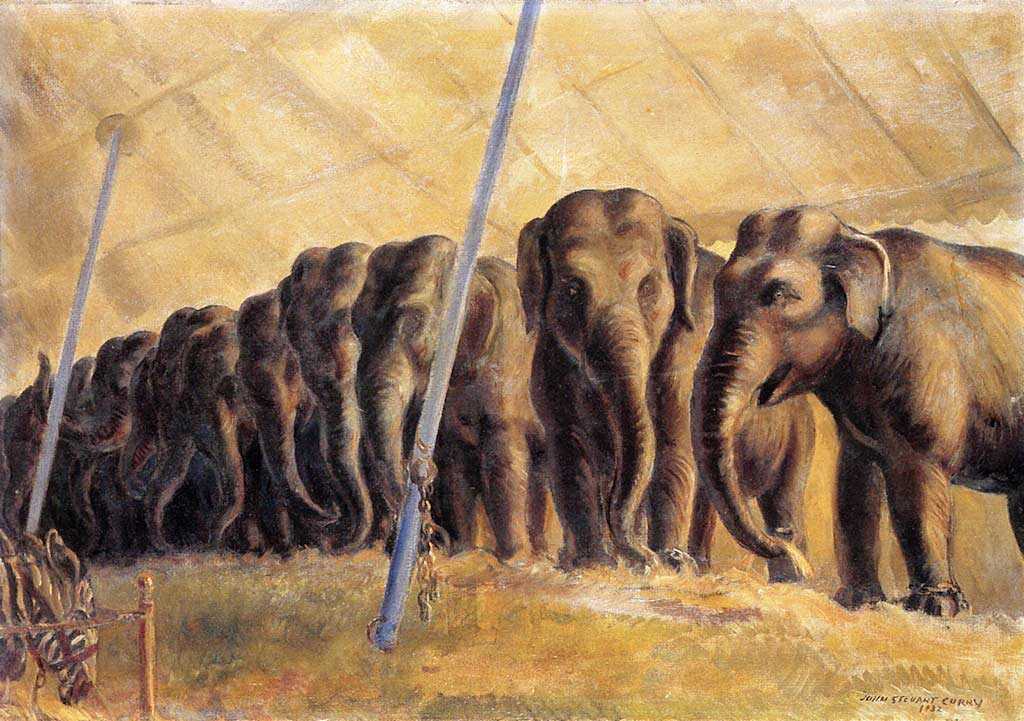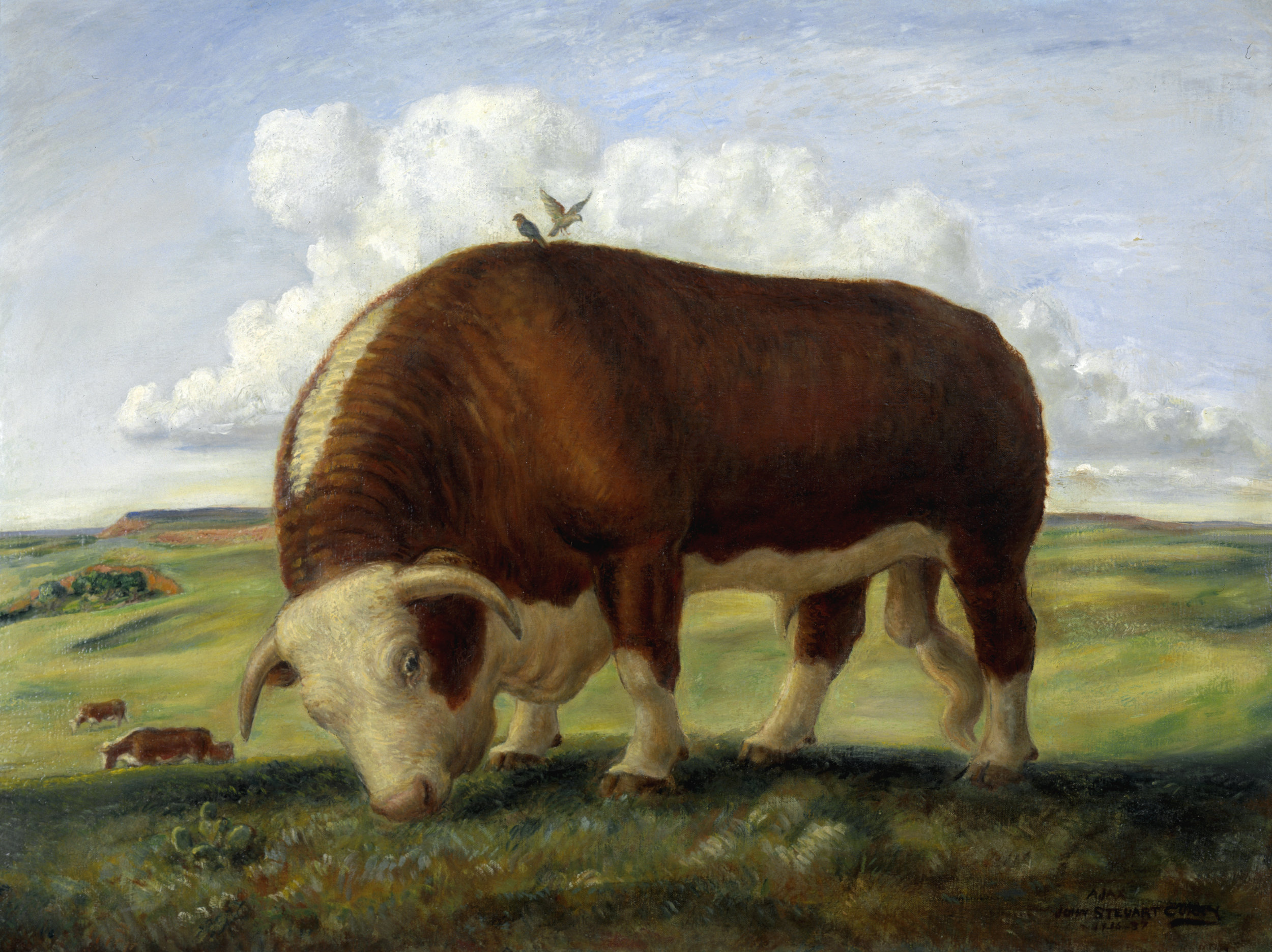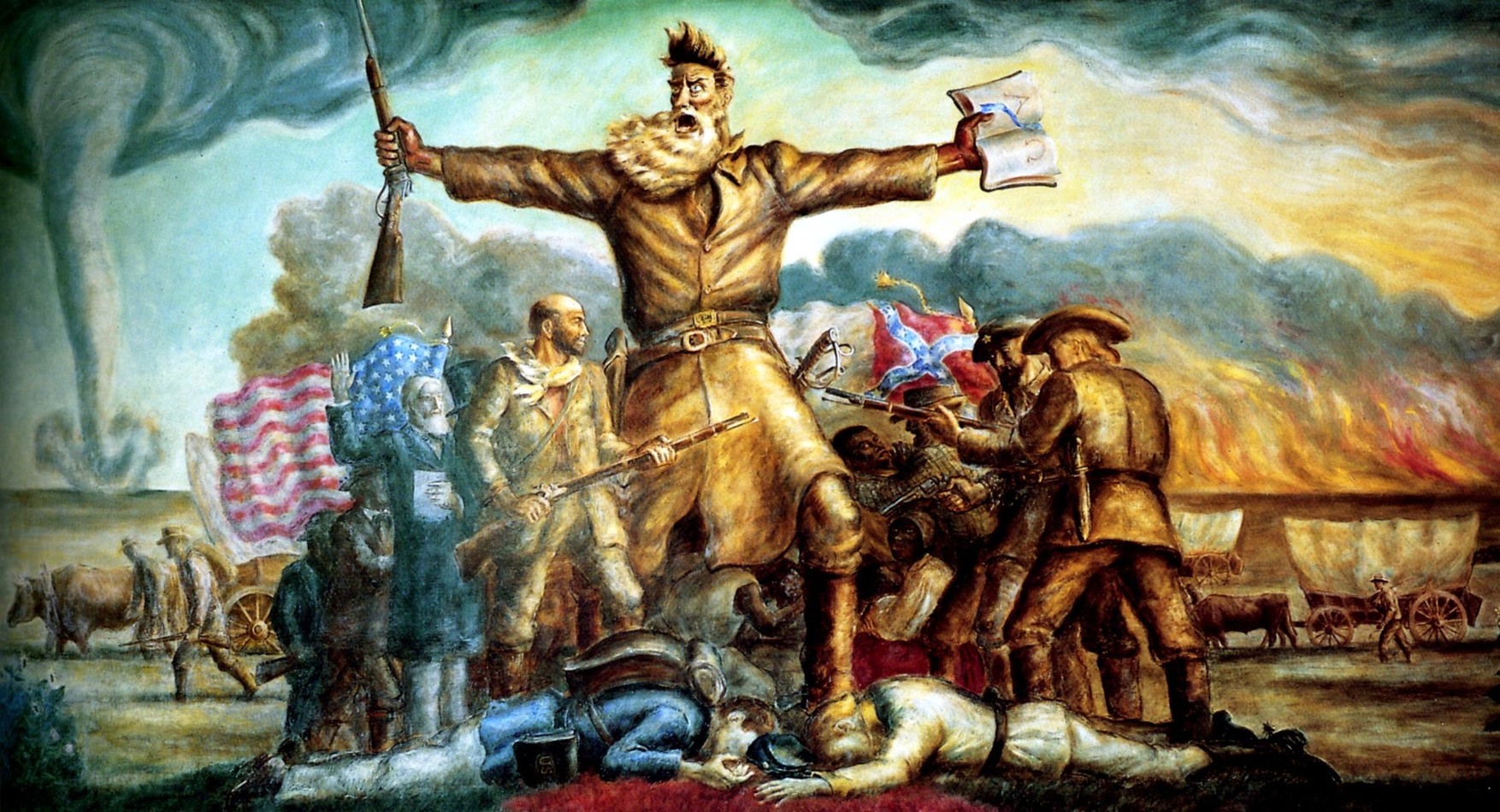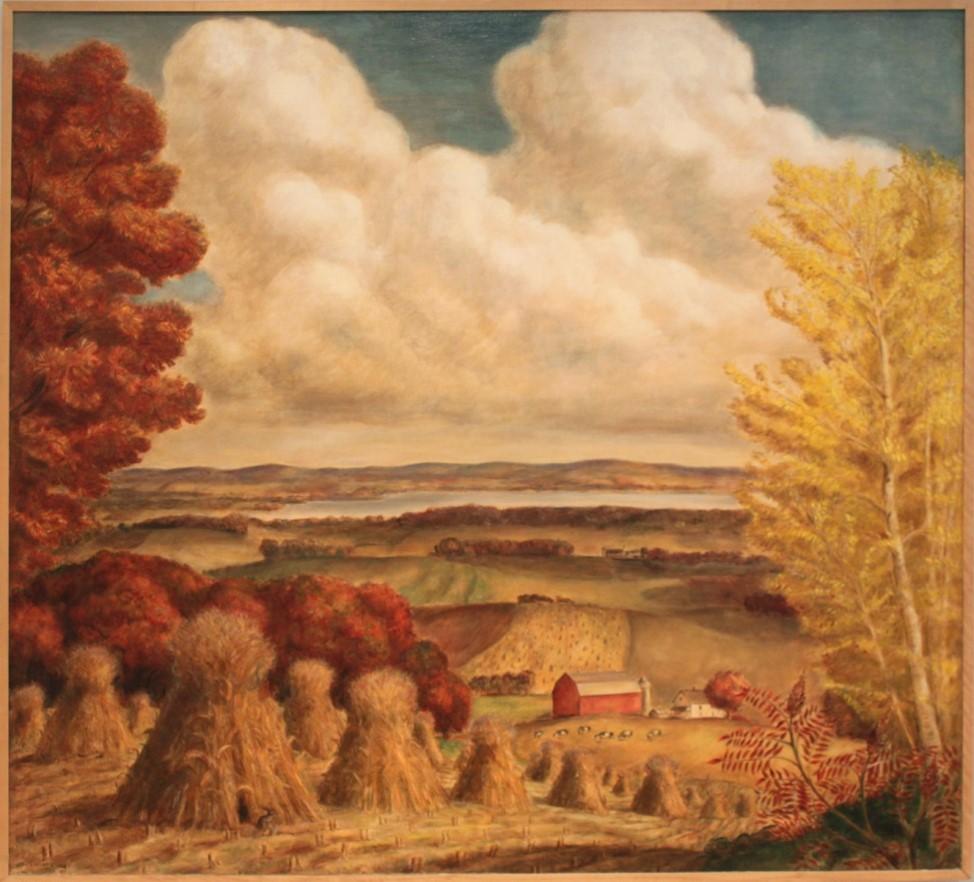John Steuart Curry • American (1897-1946)
Sanctuary C: 1944 • Lithograph on Paper 11-3/4" x 15-3/8"
You can take the boy off the farm, but you can’t take the farm out of the boy. John Steuart Curry was born and raised on a Kansas farm surrounded by nature, animals and religious folk. During his nineteen years as a professional artist, he brought to life the fight between man, animals and nature he saw up close as a young Kansas farm boy.
He took in Paris with his new bride and was enchanted by the Old Masters, especially Paul Rubens. He almost, but not quite, imitated their style as he captured the Kansas of his youth. His paintings showed tornadoes, floods, farmlands, lynch mobs and outdoor baptisms, all capturing the “historical struggle of man with nature. It is my family’s tradition and the tradition of a great majority of Kansas people.” Unfortunately Kansans didn’t return the love, fearing he was ridiculing their life in the elite art salons of New York.
Curry’s once promising art career began to fail in the teeth of the Great Depression and his wife’s deteriorating mental state. He left. She died. It was a dark time.
(story continues below break)
INTERESTING STORIES FROM OUR SPONSORS

Two years later, in 1934, Curry remarried and found government work bringing art to farmers as an Artist-In-Residence in Wisconsin. By 1938 he was even able to repay the 4-year old, $250 Demand Note he’d signed before leaving to join the circus. His former father-in-law cut the interest rate in half to “speed” payment.
His art brightened and many of his letters to family and friends were decorated with quick drawings of sunrises. He became one of the leading Regionalist artists of the day, joining Grant Wood (who he considered a boor) and Thomas Hart Benton in a triumvirate of artists celebrating romanticized rural life in the early 20th century.
Eventually the state of Kansas came around, commissioning his most ambitious work, an idealized panorama of Kansas life to grace the statehouse walls. Almost finished, but not quite, it fell victim to the kind of political bickering we now consider something new.
Curry died in 1946. As biographer Bill North wrote: “He went to his grave a relatively young man, still caught between fear and faith and too young to see history’s vindication of his life’s work.”
Another near miss.
Canton Museum of Art Permanent Collection • Gift of Mr. & Mrs. Dustin C. Lewis, 84.51
4 Ways to Sound Smart When Viewing at The Canton Museum of Art
1.
“Knowing that he often painted scenes with biblical undercurrents, it’s hard to look at this lithograph without thinking of the story of Noah’s Ark.”
2.
“He was particularly fond of painting animals imposing their will on other, weaker animals, making this piece even more interesting.”
3.
“He was best known for his paintings of rural Kansas life and scenery. But people in Kansas were slow to embrace him, thinking his work reinforced negative stereotypes of them.”
4.
“He was the youngest of a trio of artists who led the Regionalist Movement romanticizing rural American life. Thomas Hart Benton and Grant Wood were the others.”
Dwight Timeline. Scroll over images to see timeline.



